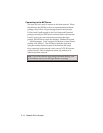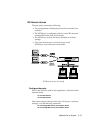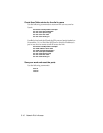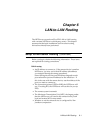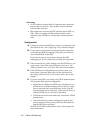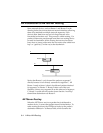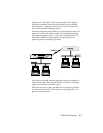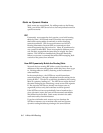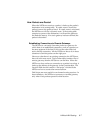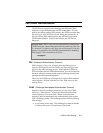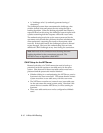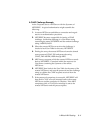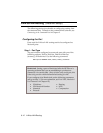6-6 LAN-to-LAN Routing
Static vs. Dynamic Routes
Static routes are user-defined. By adding entries to the Routes
Table, you tell the NETServer how to forward packets bound for
specific networks.
RIP
Fortunately, most networks don’t require you to build routing
tables by hand. All IPX and most IP networks use a protocol
that builds routing tables dynamically to reflect changing
network conditions. IPX servers and routers use Novell’s
Routing Information Protocol (RIP) to communicate what
network segments they have access to. Many IP machines also
use a protocol called RIP. These are completely different proto-
cols, but they accomplish the same thing in roughly the same
manner. The NETServer handles both protocols identically.
When you execute a command that affects RIP messaging, both
versions of the protocol are affected.
How RIP Dynamically Builds the Routing Table
Network devices running RIP (either version) broadcast the
addresses of the network segments which they know how to get
to. Routing tables are built by listening to the broadcasts of
other machines.
In the example above, the NETServer would learn about
network segment C through a broadcast from the routing device
joining B and C. This device would then be added to the routing
table as a gateway leading to C. The NETServer might also hear
the same routing device advertising a route to network segment
B. But, since the NETServer already has a better route to
segment B (a direct one), the broadcast would be ignored.
If the NETServer does not periodically hear a broadcast for a
given (dynamic) route, the route will be assumed unavailable
and deleted from the table. Static routes remain in the table
until removed by the administrator.
If you have defined a static route to a given location, the
NETServer assumes you want that route used and ignores
dynamic routing broadcasts pointing to the same location.



